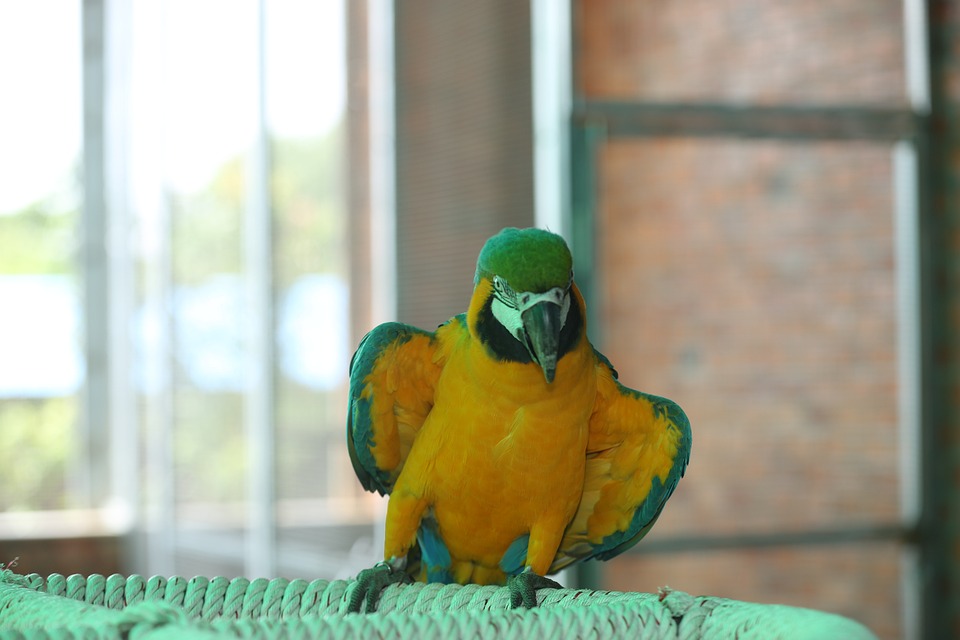Parrots are highly intelligent and social creatures that require mental and physical stimulation to thrive. One effective method to encourage positive behavior and bond with your feathered friend is through the use of treats. In this article, we will explore the significance of treats in parrot behavior training, their impact on learning, and address frequently asked questions related to this topic.
Why Treats are Essential in Parrot Behavior Training
Treats serve as powerful motivators during parrot behavior training sessions. They act as positive reinforcements, encouraging desired behaviors and helping your parrot associate these behaviors with rewards. Treats can be utilized to:
1. Encourage positive behaviors: Whether it’s teaching your parrot to step up onto your hand or to speak specific words, treats provide an incentive for your parrot to cooperate and engage in desired behaviors.
2. Facilitate bonding: Offering treats during training sessions creates a positive association between you and your parrot. This not only strengthens the bond between you but also establishes you as a trustworthy and rewarding figure in your parrot’s life.
3. Reduce fear and anxiety: Parrots may exhibit fearful or anxious behaviors when faced with unfamiliar situations or objects. By using treats as rewards, you can help your parrot associate these situations or objects with positive outcomes, easing their anxiety and promoting a sense of security.
4. Stimulate mental activity: Parrots are highly intelligent creatures that require mental stimulation to prevent boredom and behavioral issues. Incorporating treat-based training exercises challenges their problem-solving skills, keeping their minds active and engaged.
Choosing the Right Treats
Not all treats are created equal when it comes to parrot behavior training. It is crucial to select treats that are safe, healthy, and appealing to your feathered friend. Consider the following factors when choosing treats for your parrot:
1. Nutritional value: Opt for treats that are nutritious and support your parrot’s overall health. Fresh fruits, vegetables, nuts, and high-quality commercial bird treats are excellent options. Avoid sugary or fatty treats, as they can lead to health issues in the long run.
2. Size and texture: Treats should be small enough for your parrot to consume quickly without interrupting the training session. Additionally, choose treats that have a desirable texture for your parrot, as this can enhance their enjoyment and motivation.
3. Variety: Offering a variety of treats keeps your parrot engaged and prevents monotony. Rotate between different types of treats to maintain their interest and excitement during training sessions.
Frequently Asked Questions (FAQs)
Q1: How often should I give treats to my parrot during training?
A1: Treats should be given in moderation to avoid overfeeding and potential health issues. During training sessions, provide treats as rewards for desired behaviors, but ensure they make up only a small portion of your parrot’s overall diet.
Q2: Can I use my parrot’s regular food as treats during training?
A2: While it is possible to use a portion of your parrot’s regular food as treats, it is generally more effective to use special treats specifically designated for training purposes. This helps create a clear distinction between regular meals and rewards, reinforcing the positive association with training.
Q3: How do I wean my parrot off treats once the behavior is established?
A3: Once a behavior is well-established, gradually reduce the frequency of treat rewards while still providing verbal praise, head scratches, or other forms of positive reinforcement. Over time, your parrot will learn to perform the behavior without the need for treats.
In conclusion, treats play a vital role in parrot behavior training. They serve as powerful motivators, aid in bonding, reduce fear and anxiety, and stimulate mental activity. When choosing treats, prioritize their nutritional value, size, texture, and variety. Remember to use treats in moderation and gradually decrease their use as behaviors become established. The effective use of treats can be a game-changer in shaping your parrot’s behavior and strengthening your bond with them.









